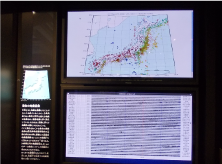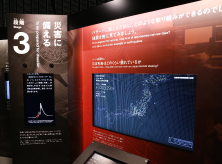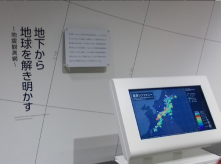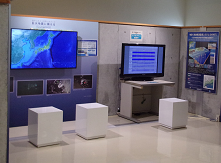Following the Kobe earthquake on January 17, 1995, National Research Institute for Earth Science and Disaster Resilience (NIED) established four nationwide land observation networks, Hi-net, K-NET, KiK-net, and F-net, to improve understanding and assessments of earthquakes and their impacts. NIED also established V-net at 44 volcanoes to monitor volcanic activity.
After the Tohoku earthquake on March 11, 2011, a seafloor observation network, S-net, was installed from off Hokkaido to off Chiba Prefecture for rapid detection of offshore earthquakes and tsunamis. In April 2016, NIED took over the operation of DONET, another seafloor network in Kumano-nada and off Kii Channel, from Japan Agency for Marine-Earth Science and Technology (JAMSTEC).
Furthermore, the construction of the Nankai Trough Seafloor Observation Network for Earthquakes and Tsunamis (N-net), extending from offshore Kochi Prefecture to Hyuga-nada region, began in 2019 and was completed in June 2025.

Hi-net is a high-sensitivity seismograph network consisting of nearly 800 stations with an average spacing of 20 km. The seismometers are installed at the bottom of boreholes at a depth of 100-3500 m to reduce noise caused by winds, ocean waves, and human activity. The observed data is continuously transmitted to NIED to be used for researching microearthquakes and other seismological phenomena.
K-NET is a strong motion seismograph network consisting of more than 1,000 stations with an average spacing of 20 km. The seismometers are installed on the ground surface and stay on scale even during strong shaking. Most of the K-NET seismometers are officially approved as seismic intensity meters. Seismic intensity from K-NET supports government decision-making.
KiK-net is a strong motion seismograph network consisting of pairs of seismometers installed on the ground surface and in the borehole together with the Hi-net high-sensitivity sensors. Surface and downhole observations provide important data to understand amplification of strong shaking near the surface.
F-net is a broadband seismograph network consisting of about 70 stations nationwide. The seismometers are installed at the end of tunnels, several dozen meters from the entrance, where temperature and pressure are stable, and accurately measure ground motion over a wide frequency range. These broadband measurements provide useful implications for earthquake source mechanisms and the structure of the Earth.
V-net is an observation network operated at 44 volcanoes in an effort to develop eruption forecast and volcano hazard mitigation. Several types of instruments are installed, including borehole seismometers, borehole tiltmeters, GNSS receivers, and broadband seismometers. The borehole measurements at Mt. Miyake observed precursors to the eruption in 2000. At Mt. Asama, a radar interferometer is also installed, to monitor surface deformation from magma movement before and during eruptions.
S-net is an ocean bottom observation network consisting of 150 observation units from off Hokkaido to off Chiba Prefecture. Each unit contains seismometers and water pressure gauges to observe offshore earthquakes and tsunamis. All the data is transmitted to the land stations by fiber-optic cable and arrives at NIED in real time.
DONET is an ocean bottom observation network consisting of 51 stations in Kumano-nada and off Kii Channel, focused on monitoring of earthquakes and tsunamis in the region. A wide variety of instruments are installed, including strong motion seismometers, broadband seismometers, water pressure gauges, hydrophones, differential pressure gauges, and thermometers. The network is designed to be expandable and replaceable, allowing for adding stations and replacing instruments. The data is transmitted to research institutes and universities in real time, and improves precision and warning times of earthquake early warning and tsunami warnings/advisories by JMA.
The observation network currently under development in the off the coast of Kochi Prefecture to the Hyuganada, which is an observation blank area in the anticipated source area of the Nankai Trough Earthquake. 36 inline observatories equipped with seismometers and water pressure gauges are planned to be installed (18 have already been installed). The N-net is a hybrid system that, like the S-net, covers a wide area of the sea area by connecting observation equipment to optical submarine cables, and at the same time has the expandability of the DONET. The N-net will enable direct detection of earthquake up to 20 seconds and tsunami up to 20 minutes earlier.
Earthquake Research Institute (ERI) at the University of Tokyo established MeSO-net consisting of about 300 stations with a spacing of 2-5 km, to measure ground shaking and monitor seismic activity in the Tokyo metropolitan area. NIED took over the operation of MeSO-net from ERI in April 2017.
Real-time seismic data from MOWLAS is displayed at several museums, which includes maps showing seismic activity and earthquake seismograms.

National Museum of
Nature and Science

National Museum of Emerging
Science and Innovation

Nagoya City Science Museum

Muroto Global Geopark Center